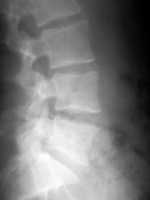Author Interviews, Beth Israel Deaconess, Brigham & Women's - Harvard, Frailty, Heart Disease, Surgical Research / 05.02.2019
How Functional Are Frail Adults After Aortic Valve Replacement?
MedicalResearch.com Interview with:
Dae Hyun Kim, MD, MPH, ScD
Assistant Professor of Medicine, Harvard Medical School
Hinda and Arthur Marcus Institute for Aging Research, Hebrew SeniorLife
Division of Pharmacoepidemiology and Pharmacoeconomics, Department of Medicine, Brigham and Women’s Hospital
Division of Gerontology, Department of Medicine,
Beth Israel Deaconess Medical Center
MedicalResearch.com: What is the background for this study? What are the main findings?
Response: The number of older adults undergoing aortic valve replacement is increasing. Since these patients are at high risk for complications and functional decline due to preexisting multimorbidity and frailty, the latest guideline (Otto et al. J Am Coll Cardiol 2017;69:1313–46) emphasizes shared decision-making based on patient-centered outcomes. Despite this recommendation, we witness many decision-making processes are cardio-centric—mainly informed by expected benefit in terms of cardiac-specific measures. Many patients are not adequately informed about what their daily life would be like after the procedure.
In this single-center prospective cohort study, we examined functional status trajectories via assessments of global functional status at 1, 3, 6, 9, and 12 months in 246 patients who underwent transcatheter and surgical aortic valve replacement. We identified 5 clinically meaningful functional trajectories, ranging from high baseline function-early complete recovery to low baseline function-large and persistent decline. We were able to predict most likely trajectory as well as best possible and worse possible trajectories using the preoperative frailty index. Delirium and postoperative complications were also strongly associated with undesirable functional trajectories. (more…)






























